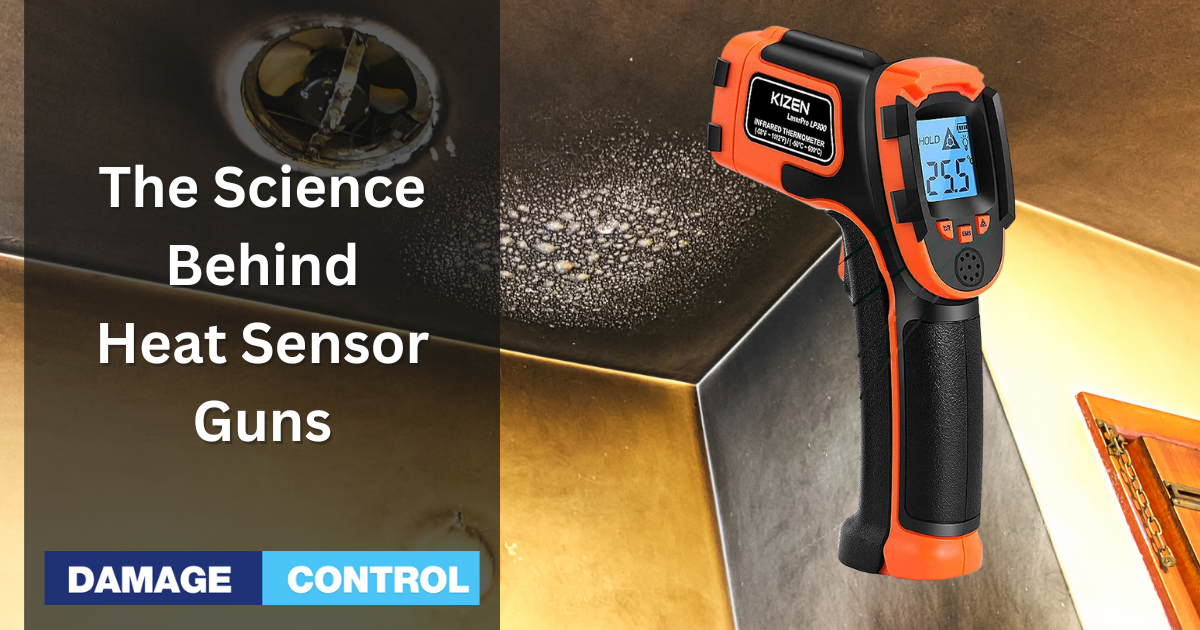Hey there, science buffs and curious minds! Ready to dive into the world of heat sensor guns? Also known as infrared thermometers, these nifty devices measure temperature from a distance. They’re handy, precise, and downright fun to use.
When Do You Need a Heat Sensor Gun?
Picture this: You're working on your car engine, suspecting overheating. It's too hot for bare hands. Enter, the heat sensor gun. Without any contact, it tells you the exact temperature. Neat, right?
Heat sensor guns, or infrared thermometers, are more than tools for auto mechanics or labs. They have far-reaching applications making life easier in unexpected ways.
Imagine you're baking a cake. Is your oven reaching the right temperature? With your heat sensor gun, you can check quickly, ensuring your culinary creations are perfectly baked.
They also spot heat leaks in your home. Is the living room always chilly during winter? Take a reading around your windows and doors. You might find heat escaping, giving you a chance to tackle those drafts and make your home cozier.
Are you certain your fridge is cold enough for food freshness? A quick point-and-shoot of the heat sensor gun will give you an accurate temperature reading. It works for the freezer too, guaranteeing your ice cream stays delightfully frosty!
Body temperature checking for humans and pets can be done quickly, and non-invasively. This is a relief, especially for pets unappreciative of traditional thermometers.
Concerned if your computer is overheating after prolonged use? Or if an old lamp is running too hot? A heat sensor gun provides quick answers, helping keep your electrical equipment safe, and extending its lifespan.
In essence, a heat sensor gun is a versatile solution to everyday problems. This device has something for DIY enthusiasts, pet owners, home cooks, or car lovers. Don't be surprised if it quickly becomes the tool you can't live without!
The Science Behind the Magic
Ever wondered how heat sensor guns work? How they capture heat without any physical contact? They might seem like magic, but in fact, they operate on the principles of science, specifically, infrared radiation. Intrigued? Let's break it down.
Infrared radiation – that's the stuff your TV remote uses to switch channels. Every object around us, including ourselves, emit this invisible infrared energy. The hotter an object gets, the more infrared energy it gives off.
Heat sensor guns, or infrared thermometers, are engineered to detect this energy. When you point the gun at an object and pull the trigger, it releases an invisible beam of infrared light. This light bounces off the object and returns to the thermometer.
The gun then measures the amount of infrared energy in the beam. The more energy, the hotter the object. In a fraction of a second, the gun converts this data into an easy-to-read temperature display.
Keep in mind that these devices measure surface temperature, not internal heat. For instance, if you use it to check your turkey in the oven, it will tell you the temperature of the bird's skin, not the meat inside.
So, in a nutshell, heat sensor guns use the invisible power of infrared radiation to measure temperature. Whether you're checking your car's engine, monitoring your oven's temperature, or ensuring your home isn't leaking heat, these handy devices make it easy. It's not magic, but it sure feels like it!
The Method: How to Use a Heat Sensor Gun
Ready to give it a whirl? Here's a simple guide on how to use your new gadget:
- Turn on the device and point the sensor end towards what you want to measure.
- Press the trigger to take a reading. The temperature should display on the screen.
- Remember to always aim for a flat, opaque surface for the most accurate reading.
So, folks, that's the rundown on heat sensor guns. A neat piece of technology, wouldn’t you say? Whether you're a professional needing precise measurements or a DIY enthusiast, this tool deserves a place in your kit. Stay curious, and keep exploring!

